Offered by the California Local School Wellness Policy Collaborative
.jpg?sfvrsn=eb3b69e2_8)
According to the USDA Final Rule, Local Education Agencies (LEAs) must conduct a comprehensive assessment of the Local School Wellness Policy (LSWP) a minimum of once every three years, beginning no later than June 30, 2021. The Triennial Assessment requires LEAs to assess compliance with their LSWP and to make this assessment available to the public.
The California Local School Wellness Policy Collaborative (CA LSWP), in collaboration with the California Department of Education developed this template to assist LEAs with conducting the required Triennial Assessment. LEAs are strongly encouraged, but not required, to use this template when conducting Triennial Assessments. To align closely with the Final Rule Requirements, the Triennial Assessment Template includes four sections- one for each component of the triennial assessment.
For your reference, the CA LSWP created a Final Rule Requirements Table that outlines the LSWP requirements. LEAs should review this information prior to conducting their Triennial Assessment.
The Triennial Assessment is comprised of four components:
1. Comparison to a model Local School Wellness Policy
2. Progress made in attaining the goals of the wellness policy
3. Extent of compliance for all schools with the District LSWP
4. Triennial Assessment report to the public

Introduction
The first step LEAs must take in conducting their Triennial Assessment is to compare their written Local School Wellness Policy to a model policy. The purpose of comparing a LEA’s school wellness policy to a model
policy is to identify areas of strength, opportunities for improvement, and to identify where LEAs could adopt language to make their wellness policy stronger. This is a useful exercise for school wellness committees to complete together, if possible.
Before you Begin
Before LEAs begin completing this component, they should make sure their LSWP is up-to-date and conforms to the USDA Final Rule Requirements of 2017. LEAs should use the flowchart below to determine their first step
in completing their wellness policy comparison.
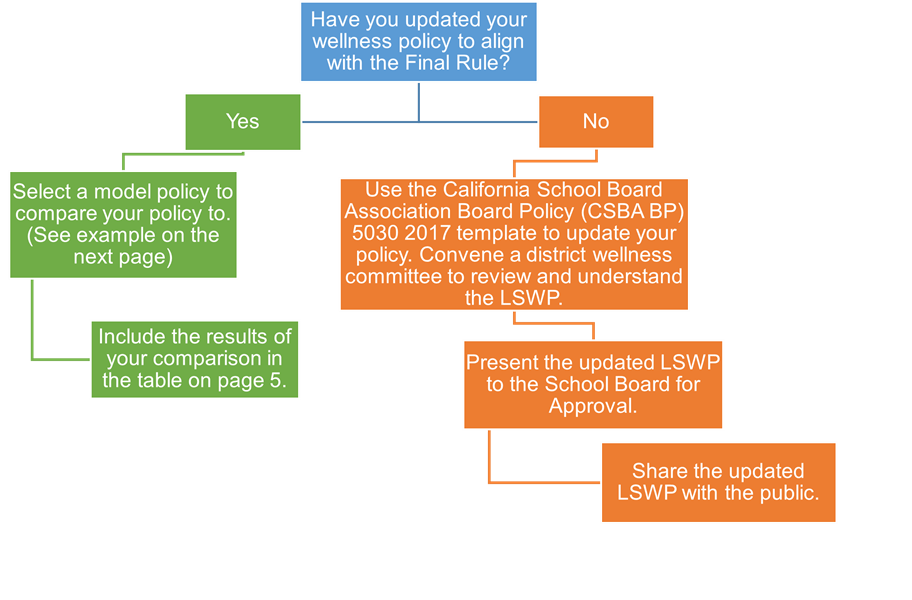
Complete your Comparison
There are a variety of Model Wellness Policies available for districts to use when completing their comparison. The CA LSWP Collaborative has outlined a few of the most common
tools below, including:
The CA LSWP has also created comparison tool templates for each of these model wellness policies. The comparison tools make the process of comparing your School Wellness Policy to a model policy simple and streamlined.
 Alliance for a Healthier Generation Model Wellness Policy
Alliance for a Healthier Generation Model Wellness PolicyThe Alliance for a Healthier Generation (AHG) Model Wellness Policy includes language that meets the minimum federal standards for LSWP implementation under the Healthy, Hunger-Free Kids Act of 2010. The AHG’s Healthy Schools Program Framework sets higher standards for schools and represents best practices in school nutrition and physical activity, as well as health education (HE) and physical education (PE).
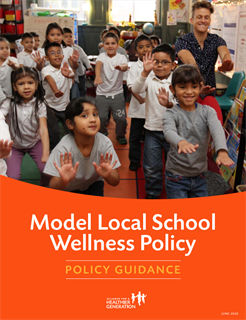
Pros of the AHG Model Wellness Policy:
Cons of the AHG Model Wellness Policy:
Download the (Link) AHG Comparison tool (XLS) (Link) to compare your policy language
The WellSAT 3.0 Wellness School Assessment Tool allows districts to assess their policy language strength and comprehensiveness by allocating a score for each topic within required components.
The tool also provides sample language to consider incorporating into the policy that could assist with increasing the overall score.
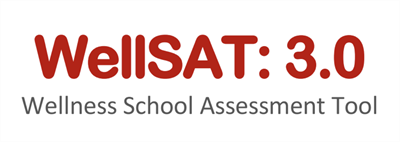 Pros of the WellSAT 3.0:
Pros of the WellSAT 3.0:
Cons of the WellSAT 3.0:
Download the (Link) WellSAT 3.0 Comparison tool (XLS) (Link) to compare your policy language
California School Board Association Board Policy 5030 (CSBA BP 5030) is a template wellness policy created by the CSBA. Many districts used this template to create their current School Wellness Policy.
Pros of CSBA BP 5030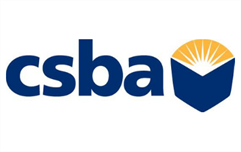
Cons of CSBA BP 5030:
Download the (Link) CSBA BP 5030 Comparison tool (XLS) (Link) to compare your policy language
Document your Comparison
After completing the comparison of your LSWP to a model LSWP, complete the Model School Wellness Policy Comparison Results in the template on the next page to document your comparison.
Model Wellness Policy Comparison Results Template
Sample Model Wellness Policy Comparison Results table

Introduction
The second component of the Triennial Assessment is identifying the extent to which schools within your district are compliant with the LSWP as it is written. The purpose of this is to determine whether schools within
the district are following the LSWP. This helps districts identify where to provide additional support to reach the requirements included in the LSWP.
Before you Begin
To assess the extent of compliance for schools within your district, examine your LSWP as it is written, to ensure you understand the details of the policy. Identify key stakeholders from each school site to assist you, and work together to determine the best approach for conducting your assessment.
Complete your Assessment
Every school and district wellness policy will look different, so it is up to the LSWP committee to determine the best approach for assessing school compliance. However, the examples listed below are common methods of assessment.
Survey
Create a survey to send to key school stakeholders to assess compliance. Include language from your LSWP as part of the assessment. For example, if you have specific language in your policy regarding competitive food standards,
consider including a question in your survey asking school principals whether the competitive food standards are being followed in the classrooms on their campus.
Assessment Tool
Use an existing assessment tool to assess compliance. The LSWP collaborative recommends using one of the following:
 The School Health Index
The School Health IndexKey Informant Interviews
Conduct interviews with key stakeholders at school sites to assess compliance. Similar to the survey option, try using language directly from your LSWP to form your questions.
School Site Wellness Committee Reports
Some districts have school site wellness committees. These are often comprised of key school stakeholders. Work with these committees to assess compliance within their respective school
sites.
Document your Assessment of School Compliance
Use the table on the next page to document the extent to which schools within your district are in compliance with your LSWP.
Extent of Compliance for All Schools with the LSWP Template
Sample Extent of Compliance for All Schools within the LSWP table

Introduction
The third component of the Triennial Assessment is to assess and document progress made in reaching the goals outlined in your LSWP. The purpose of assessing and documenting your progress is to demonstrate that your
LSWP is being implemented. This is an important step in ensuring your policy is moving from paper to practice.
The Final Rule requires LEAs to provide a “description of the plan for measuring LSWP implementation”. To meet this requirement, LEAs are encouraged to develop an action plan for implementing their LSWP.
Monitor your Progress
Multiple tools exist to assess progress in achieving your LSWP goals. You can use any tool to assess the extent to which your district is compliant with your LSWP. The CA LSWP Collaborative recommends using
one of the following tools:
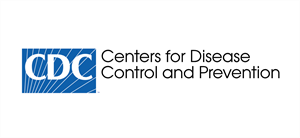 District Action Plan
District Action PlanDocument Progress Made in Reaching your LSWP Goals
After completing your assessment, complete the Progress Made in Reaching LSWP Goals Results Table on the next page to document your progress.
Progress in Reaching LSWP Goals Template
Sample completed Progress in Reaching LSWP Goals table

Introduction
Once you have completed your Triennial Assessment, the final step is to share your results with the public. The purpose of this step is to ensure the school community is aware of the LSWP work. It is also a great
opportunity to recruit new LSWP Committee Members.
Share your Results with the Public
You can use a variety of methods to share your report with the public including presentations, newsletters, and social media. It is up to you to determine how best to share this
information. Complete the table below to indicate how and when you shared your results with the public:
Triennial Assessment Report to the Public Template
Sample Triennial Assessment Report to the Public table
LSWP Report Template
Use the template in LSWP report template to create a one-page report of your LSWP work to share with the public. This template was adapted from the Arizona Department of Education.
If you have any issues accessing this document, please contact the CA LSWP.
The goal of the LSWP TEA is for LEAs to evaluate and revise their LSWP language and implementation strategies as necessary to continue creating healthy school environments. LEAs are not required to submit their assessment to the California Department of Education (CDE) upon completion. However, the LEA should maintain records of the TEA documentation and process for review. Only general questions will be asked about the LSWP TEA during the CDE’s Nutrition Services Division (NSD) Administrative Review, which occurs every four or five years.
For more information on this federally mandated LSWP requirement, please visit the CDE NSD LSWP webpage.
Resources to inspire school communities to take wellness policies from paper to practice.